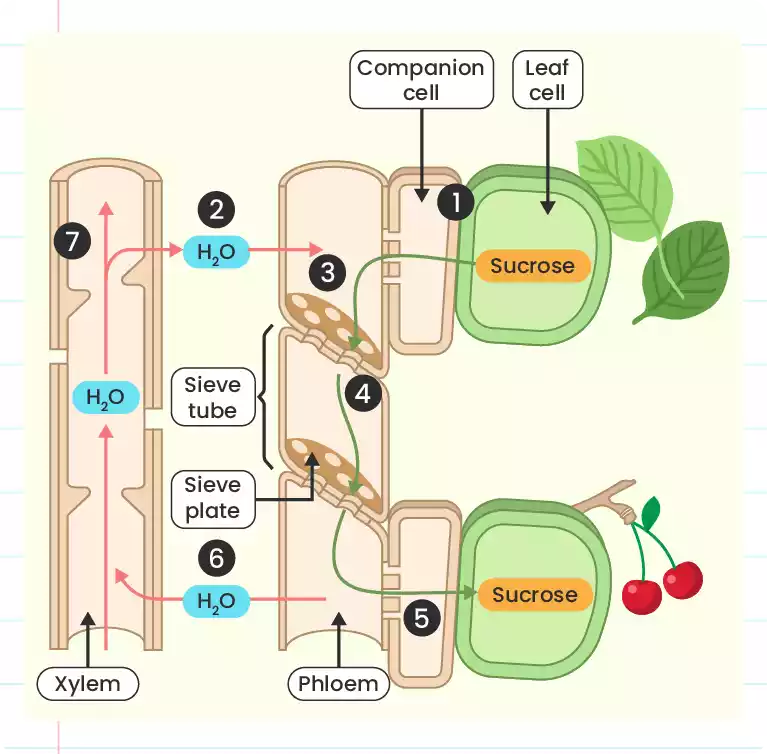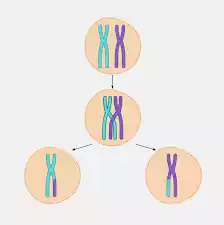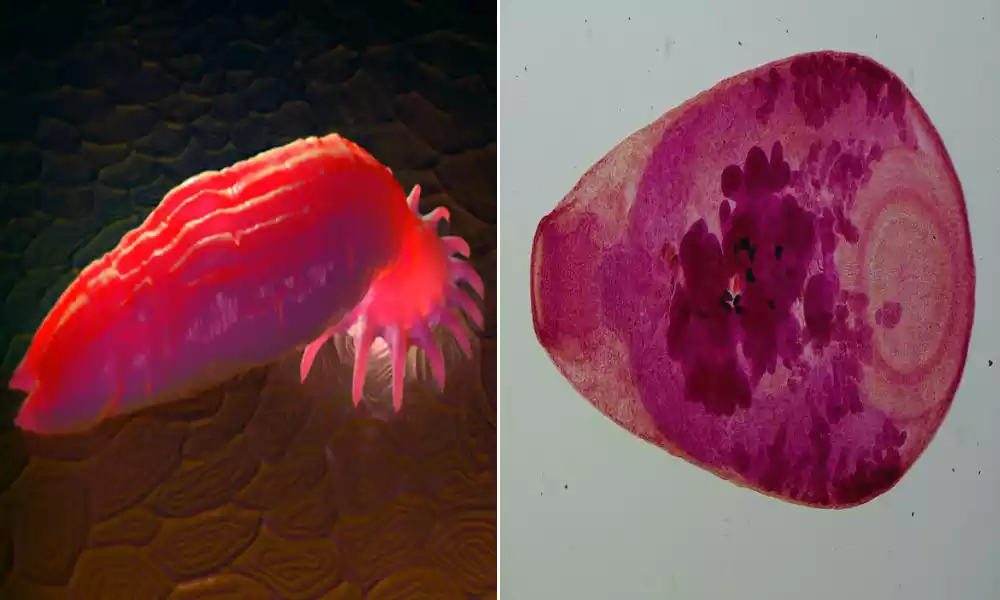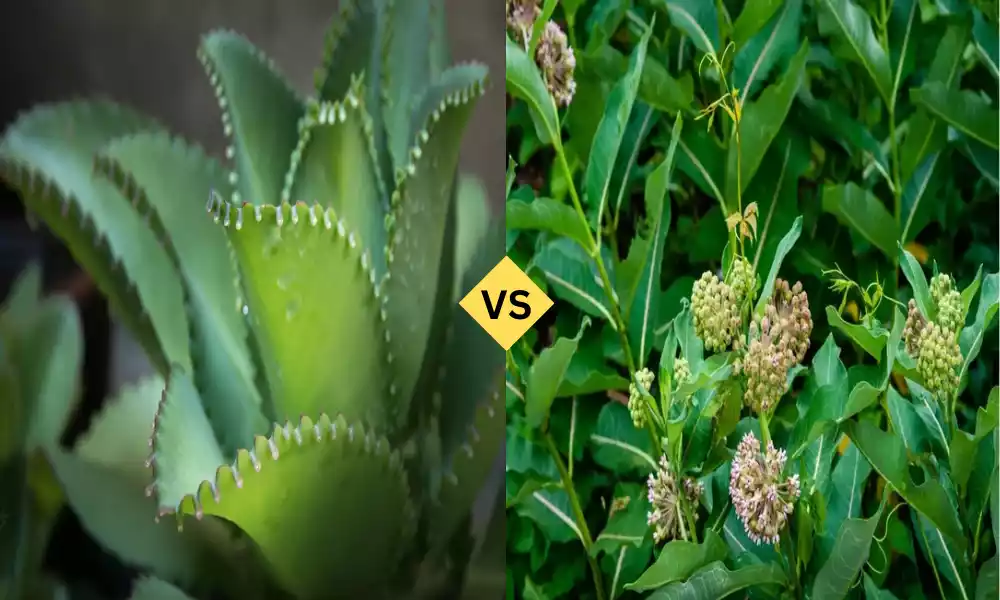A brief overview of translocation and crossing over
Translocation:
This is a genetic procedure that involves moving a segment from one chromosome into another. Translocation can take place between non-homologous or identical chromosomes. Translocations can alter the distribution and arrangement of genetic material and affect gene expression.
Translocation can be classified into two types:
- Reciprocal translocation: Segments from two different chromosomes swap places in reciprocal translocation. This rearrangement may result in a balanced or unbalanced transfer, in which no genetic material has been gained or lost, or a translocation that is not balanced, resulting either from the loss of genetic material or its duplication.
- Robertsonian Translocation: Robertsonian translocation is the fusion of chromosomes that have centromeres near their ends. The two chromosomes’ long arms join together while their short arms are lost. This type of translocation occurs in certain chromosomal diseases, such as Down Syndrome (trisomy 21).
Translocations may occur spontaneously or be caused by external factors, such as radiation and certain chemicals. Translocations have a significant impact on genetic inheritance. They can also lead to genetic disorders and increase infertility.
Crossing Over:
Also known as recombination or crossing over, this genetic process occurs during meiosis. It involves the exchange between homologous genes. The crossing over process is crucial in increasing genetic diversity.
Crossing over occurs when corresponding segments from non-sisters chromatids align at certain points and then break, leading to the exchange of genetic materials. This exchange takes place in regions known as chiasmata. Crossing over encourages the exchange of alleles among homologous chromosomes. This leads to unique combinations of genetic traits.
The crossing-over takes place during the prophase 1 stage of meiosis. It is necessary for proper segregation during cell division. It is an important mechanism in evolutionary processes and contributes to genetic diversity within a population.
Crossing over, unlike translocation, is a natural process that occurs in all sexually reproducing animals. It is an important mechanism for genetic variation, adaptation and the generation new traits in offspring. Crossing over occurs when homologous chromosomes exchange genetic material during meiosis. The mechanisms, implications and roles of these processes in genetic variation, and inheritance, are distinct.
Importance of understanding the difference between translocation and crossing over
Understanding the difference between translocation and crossing over is of significant importance for several reasons:
- Genetic Disorders: Translocation plays a crucial role in the development of certain genetic disorders. Understanding translocation helps in identifying and diagnosing these disorders, such as certain types of leukemia, infertility issues, and chromosomal abnormalities like Down syndrome. Differentiating translocation from crossing over is vital for accurate genetic counseling and informed decision-making regarding reproductive choices.
- Evolutionary Processes: Crossing over is a key mechanism in generating genetic diversity within a population. It promotes the shuffling and recombination of genetic traits, leading to novel combinations of alleles. This genetic variation is the basis for natural selection and the driving force behind evolutionary processes. Understanding the distinction between translocation and crossing over provides insights into the mechanisms that contribute to the evolution and adaptation of species.
- Genetic Research: Differentiating between translocation and crossing over is crucial in genetic research studies. Researchers often study the occurrence and patterns of translocation and crossing over to investigate the inheritance of specific traits, identify disease-causing genes, and map the location of genes on chromosomes. Understanding these processes helps researchers interpret experimental results accurately and design effective strategies for studying genetic disorders and inheritance patterns.
- Clinical Diagnostics: Genetic testing and diagnostic techniques rely on the accurate identification of translocations and crossing over events. Differentiating between these processes helps in interpreting chromosomal abnormalities observed in patients and determining their clinical significance. This knowledge aids in accurate diagnosis, prognosis, and treatment planning for individuals with genetic disorders.
- Assisted Reproductive Technologies: Understanding the difference between translocation and crossing over is particularly important in assisted reproductive technologies (ART). Translocations can be inherited and impact fertility. Knowledge of translocation patterns and their implications helps in designing appropriate interventions, such as preimplantation genetic testing (PGT), to select embryos with a lower risk of genetic disorders. In contrast, understanding crossing over is relevant in studying gamete formation, meiotic errors, and the optimization of ART procedures.
Understanding the difference between translocation and crossing over is essential for various fields, including medical genetics, evolutionary biology, genetic research, clinical diagnostics, and assisted reproductive technologies. It allows for accurate diagnosis, informed decision-making, and advances our understanding of genetic variation, inheritance patterns, and evolutionary processes.
Translocation
Translocation is the genetic process of moving a segment from one chromosome into another. The rearrangement may occur between chromosomes that are not homologous or even within the same one. Translocations may have a significant impact on genetic inheritance, gene transcription, and the development genetic disorders.

Translocation can be classified into two types:
- Reciprocal translocation: In reciprocal Translocation, segments of two different chromosomes swap places. The genetic material is rearranged between the two chromosomes. Translocations that are reciprocal can be unbalanced or balanced.
- Balanced Translocation: In a balanced exchange, there is no loss or gain of genetic material. The amount of genetic material is unchanged, but the arrangement has been altered. Balanced translocations do not usually cause health problems in the individuals who have them. They can increase the likelihood of unbalanced chromosomal gametes being produced during meiosis. This could lead to infertility.
- Unbalanced Transfer: A translocation that is not balanced can result in a gain or loss of genetic material. It can lead to genetic imbalances where certain genes and chromosomal areas are deleted or duplicated. Unbalanced chromosomal translocations can lead to intellectual disabilities, developmental disorders, and other genetic disorders.
- Robertsonian Translocation : Robertsoniantranslocation is the fusion of chromosomes that have centromeres near their ends. The short arms of both chromosomes may be lost. Robertsonian Translocations can be seen in certain chromosomal conditions, like Down Syndrome (trisomy 21). A translocation of the acrocentric (extra) chromosomes can result in an extra copy 21.
Translocations may occur spontaneously, or they can be passed down from parents. Translocations can be caused by external factors, such as radiation and exposure to chemicals. Identification and understanding of translocations is crucial for genetics research, diagnostics and genetic counseling. Translocations are detected using genetic testing and analysis to assess their impact on health, fertility and the risk of passing genetic disorders on to offspring.
A translocation is a rearrangement of the genetic material that involves moving it between chromosomes. It can cause unbalanced or balanced changes to genetic material, which has significant implications for gene expression and inheritance.
Crossing Over
Crossing over, also known as recombination, is a genetic process that occurs during meiosis, specifically during the prophase I stage. It involves the exchange of genetic material between homologous chromosomes, resulting in the creation of new combinations of alleles.
The process of crossing over plays a crucial role in increasing genetic diversity within a population and is a fundamental mechanism for evolutionary processes.

Here’s an overview of crossing over:
- Occurrence and Timing: Crossing over occurs during meiosis, which is the specialized cell division that produces gametes (sperm and eggs). It specifically takes place during prophase I, after the homologous chromosomes have paired up and formed structures called tetrads or bivalents. Crossing over occurs between non-sister chromatids of homologous chromosomes within the bivalent.
- Process of Crossing Over: Crossing over involves the physical exchange of genetic material between the non-sister chromatids of homologous chromosomes. It occurs at specific points along the chromatids called chiasmata, which are the visible manifestations of the crossing over process. During crossing over, the DNA molecules of the non-sister chromatids break at corresponding points, resulting in the exchange of segments of genetic material. The broken ends are then reconnected, effectively swapping genetic material between the chromatids. This exchange can occur at one or multiple points along the chromatids, leading to different levels of recombination.
- Genetic Consequences: Crossing over has important genetic consequences. It results in the exchange of alleles between homologous chromosomes, leading to the creation of new combinations of genetic traits. This genetic variation is crucial for evolution as it generates diversity within a population. Crossing over also plays a role in ensuring the proper segregation of chromosomes during meiosis. It helps to maintain the correct number of chromosomes in gametes by promoting the independent assortment of chromosomes.
- Examples: Crossing over is a naturally occurring process and is observed in various organisms, including humans. It contributes to the genetic variation seen within a population and allows for the inheritance of unique combinations of traits. For example, in humans, crossing over during meiosis results in the exchange of genetic material between the paired homologous chromosomes, leading to the production of genetically diverse sperm and eggs. Genetic diversity is what gives individuals their individual identities, passing down traits from parent to child and vice versa. Unang the process of cross-over is essential for understanding genetic inheritance patterns, population genetic diversity and evolutionary processes. It also has practical applications in genetic research, plant and animal breeding, and assisted reproductive technologies.
What is the difference between translocation and crossing over?
The genetic processes of translocation and crossing-over are different. They occur at different stages in cell division, and they have different effects.
Here are some key differences between crossing over and translocation:
- Definition and Occurrence
- Translocation: A translocation is the transfer of a genetic segment from one chromosome into another. It can happen between non-homologous or the same chromosome.
- Crossing Over: Crossing Over, also called recombination or chromosome exchange, is the exchange between homologous chromosomes that occurs during meiosis. It happens during the prophase I phase of meiosis.
- Mechanism:
- Translocation: The genetic material is physically moved from one chromosome onto another. This movement can lead to rearrangements in genetic material such as the exchange between chromosomes, or the fusion chromosome arms.
- Crossing Over: Crossing Over involves the exchange and breaking of genetic material between nonsister chromatids on homologous chromosomes. The exchange takes place at specific points known as chiasmata.
- Genetic Consequences
- Translocation: Translocation may lead to a balanced or unbalanced change in the arrangement genetic material. Unbalanced transfers involve an exchange of segments, but no loss or gain in genetic material. Translocations may affect gene expression and fertility. They can also cause genetic disorders.
- Crossing Over: By creating new combinations of alleles, crossing over can contribute to genetic diversity. This results in the recombination and shuffling of genetic material. The crossing over helps to ensure that chromosomes are segregated properly during meiosis.
- When and where do they occur?
- Translocations: Translocations may occur spontaneously, or they can be inherited. They can occur at any stage in the cell cycle, and not just meiosis.
- Crossing Over: This occurs specifically during meiosis and in particular during prophase 1. It is an essential and natural part of the meiotic cell divide, which contributes to genetic variation.
- Examples:
- Translocations: Some examples of translocations are certain chromosomal diseases like Down Syndrome (caused from Robertsonian translocations) and some types of leukemia. Translocations are common in many organisms including humans.
- Crossing Over: Crossing Over is an universal phenomenon that occurs in organisms capable of sexual reproduction. This phenomenon occurs in plants, animals and humans.
Understanding the differences between translocations and crossing overs is essential for understanding genetic disorders, inheritance patterns and genetic variations, as well as evolutionary processes. It allows for accurate diagnoses, genetic counseling and informed decisions regarding reproductive choices.
How does translocation affect genetic diversity?
Translocation has both direct and indirect impacts on the genetic diversity of a population.
Here are some ways translocation can affect genetic diversity:
- Direct Impact on the Genetic Diversity: Translocations can have a direct impact on genetic diversity, by changing the distribution and arrangement of genetic material. A segment of genetic material moving from one chromosome into another can lead to the formation of new alleles. This rearrangement introduces novel genetic variants to a population and increases its genetic diversity. The rearrangements that result from reciprocal translocations, in which segments of two different chromosomes swap places, can create new allele combinations not found on the original chromosomes. These new combinations may contribute to the genetic variety of the population.
- Indirect Effect on Genetic Diversity: The influence of translocation on fertility and reproduction success can indirectly impact genetic diversity. Unbalanced genetic translocations that involve the gain or loss of genetic material can disrupt normal gene dosage, and gene expression. The imbalance may lead to decreased fertility, abnormal development, or an increased susceptibility for genetic disorders. Translocations that reduce fertility can result in a reduced transmission of certain genetic variants. This decrease in reproductive success may result in a reduction of the frequency of specific alleles in the population. Translocations may also affect meiotic segregation and lead to unbalanced chromosomal gametes. This can lead to embryonic death or developmental defects in the offspring. Genetic diversity is also affected.
Translocations have various impacts on genetic diversity depending on their nature, impact on gene expression/dosage levels and reproductive success. Unbalanced or balanced translocations have minimal impact on genetic variation, whereas unbalanced ones can reduce fertility directly and indirectly by reducing the transmission of certain alleles in a population.
Other factors can influence genetic diversity, such as mutation, gene flow and natural selection. Translocation is one of many mechanisms that contribute to genetic variation, although it has its own implications and effects.
Can translocation and crossing over occur simultaneously?
Translocation and crossing-over cannot happen simultaneously. These are two distinct genetic processes which occur at different stages in cell division.
During interphase or mitosis, when chromosomes have been replicated and compressed, translocations occur. The movement of a genetic segment from one chromosome into another is called translocation. Translocations may occur spontaneously, inherited or caused by external factors. Translocations can cause changes in gene expression or genetic disorders.
Crossing over occurs during the meiosis phase, specifically prophase I. It is the exchange of genetic information between homologous Chromosomes. The crossing over of chromosomes is necessary for proper segregation during meiosis. It also contributes to the genetic diversity of alleles by creating new combinations. The physical splitting and rejoining DNA strands occurs between homologous chromosomes that are not sister chromatids.
Translocation and crossing-over are separate events that occur independently. Crossing over occurs specifically during meiosis. Translocation can occur at any phase of cell division, including mitosis and interphase. Both processes can have a significant impact on gene expression and inheritance patterns.
How are translocations detected in genetic testing?
Different genetic testing techniques can detect translocations. The method chosen depends on the translocation type and purpose of testing.
Here are a few common methods for detecting translocations:
- Karyotype Analyses: A cytogenetic standard technique, a kyotype analysis analyzes the number and structure of chromosomes within a cell. The procedure involves taking a sample of blood cells, culturing and stopping them at the cell division stage. Cells are stained under a magnifying glass to see the chromosomes. Translocations are identified by abnormal chromosome arrangement, such as an extra chromosome present or a fusion of two chromosomes.
- Fluorescence in situ hybridization (FISH): A molecular technique, uses fluorescently-labeled DNA probes for the visualization of specific regions on chromosomes. Labeling probes to target regions that are involved in translocation can be done with FISH. Labeled probes are bound to complementary DNA sequences in the chromosomes. This allows the detection of abnormal patterns as well as the identification of translocated segment.
- Chromosomal microarray analysis (CMA): Chromosomal microarray analysis (CMA) is a high resolution genomic technique which can detect both structural and numerical chromosomal anomalies. The hybridization of a DNA sample from a patient to a microarray that contains thousands or millions of DNA probes is the method. CMA can detect translocations through changes in DNA copies and imbalances within specific chromosomal areas. It can also detect unbalanced or unbalanced chromosomal translocations where genetic material is lost or gained.
- Next-Generation Sequencing: NGS techniques such as whole-genome or targeted gene panel sequences can be used to detect chromosomal translocations. The structural variations in the sequence data are analyzed. NGS compares the DNA sequence of a patient to a reference genome and can detect rearrangements, including translocations.
- Polymerase Chain Reaction: PCR can be used to detect translocations that are known to be linked to certain genetic disorders. These tests require the design of primers to specifically amplify the translocated segments, or the junction site of the translocation. PCR detects specific translocations by amplifying DNA fragments and analyzing them.
These include the type of suspected translocation, availability of probes or primers that are specific to the translocation, resolution required, and resources and expertise in the laboratory. For a comprehensive translocation analysis, multiple testing techniques can be combined. In many cases, genetic counseling is recommended in conjunction with genetic testing. This helps interpret the results and provides guidance and support for individuals and families who are affected by translocations.
Conclusion
Translocation and Crossing over are fundamental genetic processes that play pivotal roles in shaping genetic diversity, evolution, and human health. Their significance in creating genetic variation and driving adaptation underscores their importance in the field of genetics and biology.































